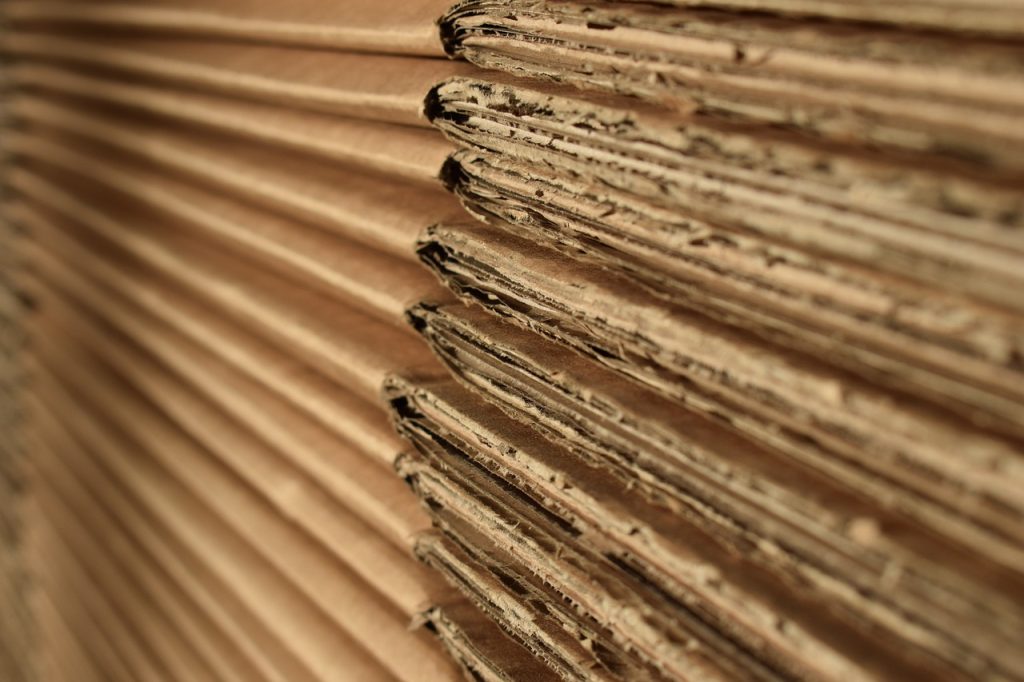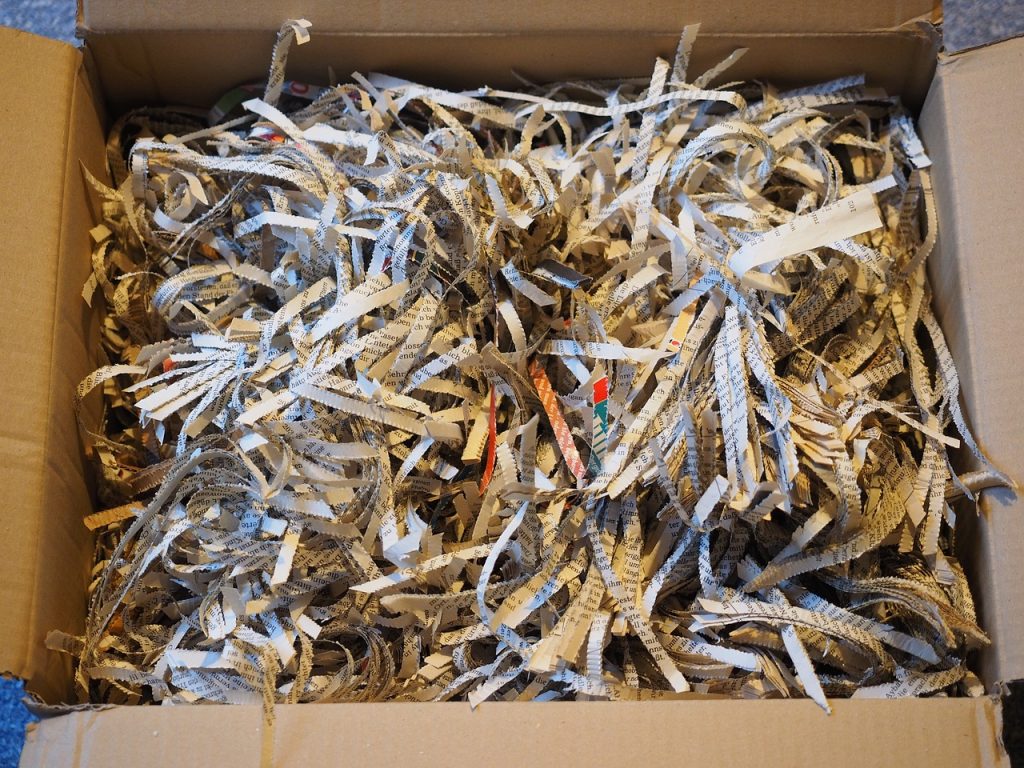- Identify all cardboard and corrugated cardboard items in your home.
- Ensure the boxes are empty and as clean as possible, removing any food particles or non-recyclable materials.
- Flatten the boxes to save space and ease the recycling process.
- Drop off your flattened boxes at a local recycling center or hire a wastage service for collection.
- Remove or black-out any labels with personal data for security.
- Consider participating in ‘cash for cardboard’ programs to get paid for your recycled materials.
Getting Started With Cardboard Recycling: The Essentials of Recycle Paper and Corrugated Cardboard
So you’re wondering how to recycle cardboard boxes and corrugated cardboard? It all starts with understanding the basics of recycling and the value of recycle paper. Whether it’s corrugated cardboard from packaging or cardboard moving boxes, recycling these paper products can make a significant impact on our environment due to the number of items that are commonly seen in packaging. Not only that, but when you recycle, you’re also contributing to your community’s recycling programs and reducing the demand for new paper production, which can significantly reduce water consumption levels.
When you begin recycling, you might notice that corrugated cardboard frequently appears in retail packaging. Corrugated cardboard is particularly prevalent in shipping and moving boxes. Despite the environmental costs of producing new corrugated cardboard, many people are unaware of how to recycle it properly. The abundant use of corrugated cardboard presents a significant opportunity for waste reduction, should the material be properly recycled rather than sent to a landfill.
Getting started with cardboard recycling isn’t complicated. Your community likely already has a recycling program in place. Ask to see if they accept cardboard moving boxes and corrugated cardboard in their recycling program. If not, don’t worry. Many cities have recycling programs that specialize in cardboard and paper recycling.
Beyond just contributing to public recycling programs, you can also take steps at home to recycle paper and cardboard in eco-friendly ways. This includes reusing boxes for storage or moving and taking advantage of the recyclable nature of many packaging materials. To recycle paper and boxes properly, first break down the boxes, remove any plastic or non-paper material, and then place the cardboard in your recycling bin.
The great thing about recycling cardboard and paper is that it isn’t just beneficial from an environmental standpoint. The recycling industry is big business that contributes to job creation and economic output. When you recycle paper and cardboard, you’re contributing to a larger societal and environmental cause, all while ensuring that waste products are put to good use.
The environmental benefits of recycling cardboard are extensive. It reduces the demand for new paper, which can save a significant amount of water and reduce deforestation. Plus, the recycling process for paper and cardboard is much less energy-intensive than the process for producing new paper. This is why it’s so crucial to recycle recycled products like paper and cardboard. Every bit helps and contributes to a sustainable future, public health, and job creation.
Recycling is part of an eco-conscious lifestyle adopted by individuals, businesses, and governments worldwide. To meet the targets of reducing waste and increasing recycling, it’s necessary that all of us play our part. So let’s start with something as simple as learning how to recycle cardboard and corrugated cardboard properly. It’s an excellent first step towards a greener world. Your effort in learning how to recycle paper, corrugated cardboard, or any other recycled materials is indeed worth it.
Remember, your local recycling programs are in place to help you recycle, and to make your efforts go as far as possible. The public good reaped from environmental stewardship is indeed substantial. But it starts with individuals taking the first step, and in the case of paper and cardboard, it’s often as simple as properly recycling your corrugated cardboard moving boxes and paper packaging.
Finding a Local Recycling Center: How to Recycle Cardboard Boxes and Packaging Materials?
One might ask, “How do I recycle cardboard boxes and packaging materials,” and the answer is simpler than you’d imagine. One way is by finding a local recycling center. Can’t find your local center? Don’t fret, assistance is available. A quick online search will provide info about your local recycling center. Center locations can vary greatly, so ensure you find the facility closest to you. Once you’ve located your center, it’s time to prep your recyclable materials.
Whether it’s a corrugated cardboard box, or a simple cardboard box – the process is simple. First, remove any non-recyclable materials. This could include packaging tape, or any ‘contaminants’. Not doing so can have negative effects on the recycling process, which we’d all prefer to avoid. Once done, place all your cardboard boxes in a recycling bin. It’s important that these bins have been appropriately labeled for recycling. Doing this ensures that your recyclable items don’t end up in normal waste bins – they should be in a designated bin for recycling.
All types of boxes, from your daily-use corrugated cardboard boxes to your more specialized packaging cartons, are recyclable. The world produces billions of cardboard boxes every year. So why not make the effort to recycle? Corrugated cardboard has the highest recycling rate compared to any other packaging material, so don’t let your recyclable box end up in landfills. Instead, send it toward a new life via recycling. Having a dedicated bin for these boxes aids this journey.
There are tips to help streamline this process. For instance, to maximize space in your recycling bin, flatten your boxes. This simple action can drastically increase the number of boxes your bin can hold. And, if your bin gets full, simply store the flattened boxes until they can be taken to the recycling center. Center hours vary, so ensure you’re aware of the appropriate times for drop-off.
Providing clear indications for which bin is for recycling at your home or business can also greatly assist. No one wants their recyclable materials ending up in normal waste bins when they could go to a recycling facility. Good recycling habits lead to a better future for all of us. Even something as simple as recycling cardboard boxes can make a significant impact.
While most people are aware that cardboard boxes are recyclable, they might not know how or where to recycle them. That’s where your local recycling center comes in. These facilities exist to help us recycle. By taking your boxes and other recyclable materials to these centers, you’re assisting in the global effort to reduce, reuse, and recycle.
The process of how to recycle might seem daunting at first, but once you’ve got it down – it’s as easy as throwing something in the trash. In fact, it’s more valuable. Each recycled box or packaging material can return as a new product, saving resources, and reducing waste. So why not consider finding your local recycling center and start recycling your cardboard boxes today?
Understanding the Recycling Stream: What Happens to Recycled Cardboard?
It’s imperative to understand the recycling stream for recycled cardboard to make the most out of its use. The recycling process ensures that discarded cardboard, especially corrugated cardboard, doesn’t turn into waste but instead contributes to environmental sustainability. Thus, recycling is a significant step taken by homes, offices, and companies worldwide to combat waste and global warming.
Once the cardboard boxes are delivered to the recycling center, they are sorted based on the type of cardboard. Primarily, there are two types- corrugated cardboard and boxboard (the thin stuff cereal and food boxes are made from). The weight, thickness, and uses are different for corrugated cardboard and cardboard, which makes segregating them critical in the recycling process. A review board at the recycling center is charged with segregating these based on suitability for recycling.
As you open your home to recycling, you might wonder precisely how to recycle cardboard. Before depositing cardboard boxes in your home recycle bin, make sure they are free from food contaminants, and any plastic, metal, or materials that are not cardboard. Remove any materials from the corrugated cardboard boxes that could interfere with the recycling process. Even food grease or a layer of wax can make boxes non-recyclable. Several recycling centers offer educational material on how to recycle cardboard effectively.
Once the cardboard is sorted and prepped, it is soaked in water and agitated to separate individual fibers, creating a slurry. It too must be free of contaminants to make strong recycled cardboard products. This pulping process helps to soften and break down the tough, cellulose fibers of the cardboard into a mushy substance. The cleaner the pulp, the better the quality of recycled cardboard that can be produced.
This pulped material then goes through a series of screens to filter out any remaining impurities. Common contaminants that are often removed include bits of plastic, strands of fabric, and pieces of metal. The pulp is then de-inked, bleached, and mixed with new wood fibers to make it sturdier. Water is subsequently squeezed out through a process called ‘dewatering.’ The pulp is now ready for the next stage – converting it back into a recyclable cardboard or paper product. Then it’s pressed flat and dried, making sheets of paper or cardboard, which can be made into new boxes and food packaging products.
Cardboard recycling offers numerous benefits. Not only does it significantly minimize waste accumulation, but it also saves energy and reduces water usage. Companies and homes can drastically cut down on their waste and carbon footprint by participating in cardboard recycling. It not only benefits the environment but also saves companies and homeowners money in waste management costs.
In a world faced with environmental challenges like global warming, every effort in understanding the recycling stream and contributing to recycling corrugated cardboard and cardboard contributes to the health of our home, Earth. So now that you understand how cardboard is recycled, it’s time to step up and make that little extra effort to segregate and recycle.
Sprucing Up Your Move With Cardboard Recycling: Turning Old Boxes Into New Opportunities
Moving can be a stressful time, and getting rid of waste, especially cardboard boxes, can seem like an even bigger chore. But what if you could change your approach to this chore by turning cardboard recycling into an opportunity? You certainly can, and here’s how. Instead of looking at those moving boxes as waste, see them as potential recycling material that, once processed, will give life to new cardboard products. Not only will this turn an otherwise arduous task into an eco-friendly solution but it’ll also assist in cleaning up your home after the move.
First things first, identify all cardboard and corrugated cardboard items in your home. Corrugated cardboard, the type typically used for shipping boxes, is highly recyclable and always in demand. Other items like food packaging can also be recycled. But remember, not all boxes are the same. Some storage boxes might be made of materials that aren’t recyclable. So it’s key to differentiate between the types of cardboard and corrugated cardboard.
Once you’ve sorted your recyclables, make sure the boxes are empty and as clean as possible. If you’ve used them for food storage, make sure all food particles are removed to prevent contamination when recycling. Also, if the cardboard boxes had contact with other non-recyclable materials, they might not be fit for recycling. Therefore, a bit of cleaning is crucial.
Next, try to flatten the boxes. This will save some space when you move them around, make it easier for the recycling process and also help when you’re trying to dispose of them in recycling bins. Some people get rather creative at this stage and begin to see old boxes as new opportunities, turning them into DIY projects, storage solutions, and even toys for their children.
To get the recycling process started, most cities and towns have drop-off locations where you can recycle cardboard and corrugated cardboard in designated bins. Gather up all your flattened boxes, load them into your car, and drop them off for recycling to give them a new life. As a result, you’ll be contributing to waste reduction, which is an environmental objective we all should strive to achieve.
However, if a drop-off location isn’t easily accessible, you might want to consider hiring a wastage service. Depending on the service, you might even get some promo codes for discounts on future services. These companies collect, sort, clean and recycle cardboard and corrugated cardboard, making cardboard recycling a seamless process.
Let’s also emphasize on another factor – data security. Often, cardboard boxes used for moving contain detailed info on the package tags, such as previous addresses or personal data. When recycling, it’s important to ensure all personal identifying data is removed to keep your information secure. So, be sure to tear off or black-out any labels with personal data before recycling.
To make the cardboard recycling process more efficient and spruce up your move, let’s seek some financing back. There are ‘cash for cardboard’ programs that’ll pay you for your recycled materials. These recycled cardboard boxes are highly useful in the shipping industry. So why not turn this waste into cash while helping the environment at the same time?
In conclusion, with proper planning and execution, recycling those moving boxes doesn’t have to be a chore. It could actually be a smart and sustainable move that turns old boxes into new opportunities. Thus, converting cardboard and corrugated waste into a fundamental tool for waste reduction, recycling and even cash return. Remember, every box counts.




